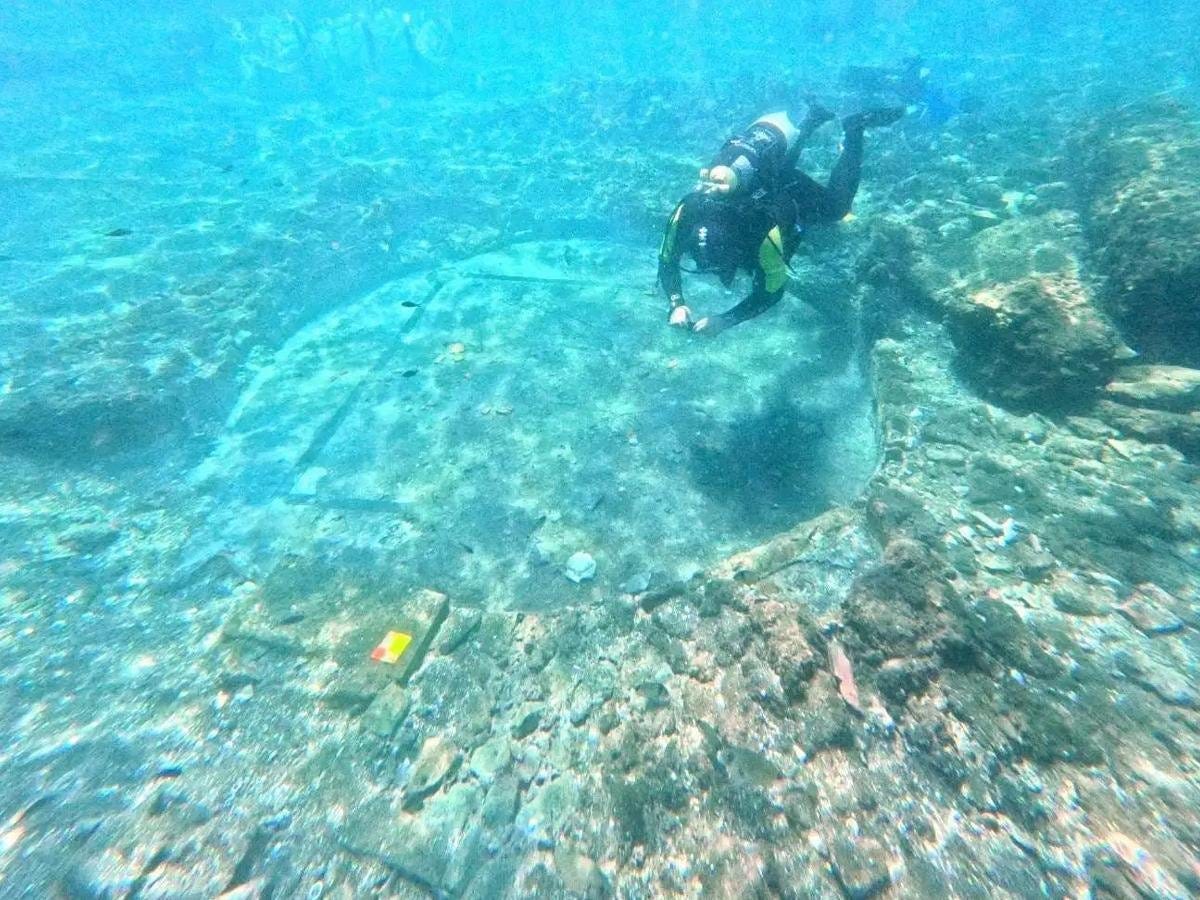Archaeologists find a submerged Roman bathhouse in Baiae which may be part of Cicero’s villa
Latest News
Reported by Archaeology News:
Three meters underwater in the Gulf of Naples, archaeologists found a remarkably preserved Roman bathhouse in the submerged ruins of Baiae, the Roman Empire’s most notorious resort. The discovery, in Zone B of the Parco Archeologico Sommerso di Baia, could be the first physical evidence of the villa of Marcus Tullius Cicero, the famous Roman orator, statesman, and philosopher.
First discovered in 2023, the site has now been fully documented and reveals an intact mosaic floor supported by small brick pillars, a component of the suspensura system—an advanced Roman heating system. This ingenious design allowed hot air to flow beneath the floor and through hollow wall tiles (tubuli), creating an evenly heated environment. The complex appears to have functioned as a laconicum, or sauna, which was a typical feature of Roman elite leisure architecture.
Traces of ancient wall paintings are still attached to the interior of the building, showing the richly decorated spaces once inhabited by Rome’s powerful citizens. Ceramic fragments unearthed at the site are being examined, with hopes that they will provide the key to the bathhouse’s construction date, purpose, and reason for its abandonment.
According to classical sources, Cicero had a villa in Baiae, and this would make the thermal complex a possible candidate for identification with his retreat. If confirmed, this would be an unprecedented physical connection to one of Rome’s greatest personalities.
Baiae’s past is as interesting as its architecture. On the northwestern shore of the Gulf of Naples, the city was named after Baius, Ulysses’ helmsman. Since the 2nd century BCE, its warm sulfurous springs, which authors like Livy praised for their healing properties, have tempted the Roman elite. By the 1st century BCE, Baiae was a dazzling playground where characters such as Marius, Lucullus, Julius Caesar, and Augustus indulged in politics and leisure. A palace was built here by Emperor Nero, and Hadrian died among its baths in CE 138.
Read more here.



